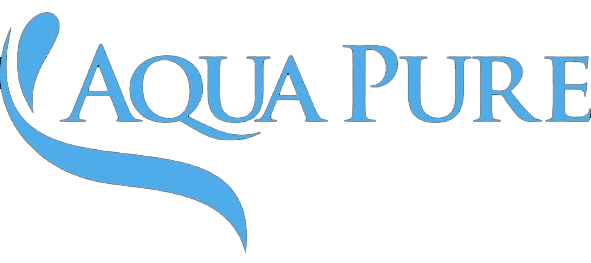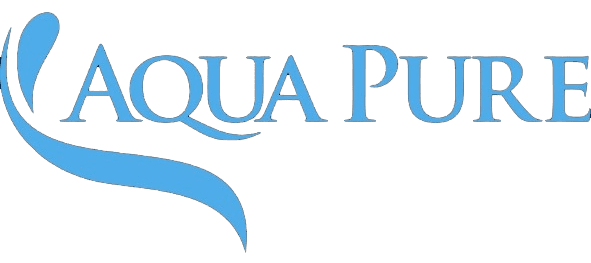When the rare Texas winter chill strikes—like during the infamous 2021 freeze or those snap cold fronts that dip into the 20s (°F)—many homeowners wake up to a nightmare: burst pipes, flooding, frozen valves, and massive water loss. This isn’t “just cold weather”; it’s a plumbing crisis waiting to happen.
In 2025, the risk is real again. Texas winters are trending more volatile, with extreme swings. You don’t need me to remind you of the heartbreak stories. But what you can do is protect your home before the damage happens. In this article, we’ll walk through:
- What local water quality in Texas looks like (and how that affects your plumbing)
- How freezing actually damages pipes
- How to spot problems early
- Practical, home-level actions to prevent burst pipes
- How to tailor solutions—filters, softeners, system upgrades
- A local FAQ for Texas residents
Let’s dive in.
What Makes Texas Water “Tick”: Contaminants, Hardness & Hidden Risks
Before we talk freezing pipes, it helps to understand what your water brings with it. Texas is large, varied, and relies heavily on groundwater systems and surface waters. So your city’s water chemistry might differ—but there are common threads.
Minerals & Hard Water
Much of Texas draws from aquifers (Carrizo-Wilcox, Edwards, Trinity, etc.). Over time, groundwater dissolves minerals. In North Texas, for example, the North Texas Municipal Water District says its treated water is “moderately hard,” citing naturally occurring calcium, magnesium, iron, and lime.
What does “moderately hard” mean in practice? Your kettles and faucets may collect scale. Appliances like water heaters and dishwashers may clog. Soap lathers poorly. Pipes can get encrusted inside, reducing flow, increasing pressure stress, and possibly exacerbating freeze risks (more solid buildup = less flexibility).
Disinfection By-Products & Chlorine / Chloramine
To keep water safe, municipal systems add disinfectants (chlorine, ammonia to form chloramine, sometimes ozone). In Dallas for instance, the water utility mentions the use of chlorine and ammonia (forming chloramine) plus lime and iron sulfate for corrosion control.
While disinfectants are essential, they can combine with organic matter to form haloacetic acids (HAA’s) and trihalomethanes (THMs). Dallas’s utility has had measurable levels of HAA5 in its system.
Long-term exposure to disinfection by-products is sometimes linked to bladder or colorectal cancers (depending on levels), and regulated limits exist under federal rules.
PFAS / “Forever Chemicals”
Starting in 2024, new federal limits were introduced for five PFAS compounds (PFOA, PFOS, PFHxS, PFNA, HFPO-DA). In Texas, 49 public water systems already reported exceedances of those limits. That’s a nontrivial fraction. PFAS are linked in studies to liver damage, developmental issues, immune suppression, cancer, and other serious health effects.
Some systems in Texas are already investing in activated carbon, reverse osmosis, or ion exchange systems to reduce PFAS. This makes point-of-entry or point-of-use filtration especially meaningful in areas served by water utilities with known PFAS detections.
Other Contaminants: Arsenic, Nitrate, Metals & Organic Pollutants
Texas utilities must test for 102 potential contaminants under TCEQ/EPA rules. Common issues historically reported in Texas include arsenic, nitrate/nitrite, fluoride, copper, lead (in older plumbing), volatile organics, and surface-water runoff pollutants (pesticides, herbicides)
In San Antonio, the water system notes potential presence of inorganic, organic, and pesticide contaminants along with microbial sources, though they report compliance with standards.
Because of these varied risks, many Texas homeowners—especially those with vulnerable individuals in the home—choose to supplement municipal supply with filtration or treatment systems on their side.
Why the Plumbing Risk Rises During Freezes
Freezing water in your pipes is not just a matter of “water turns to ice and expands” (though it certainly does). The cascade involves multiple stressors.
The Physics: Expansion, Pressure, and Rupture
Water expands about 9% when it freezes. If an enclosed section of pipe is full of water and it solidifies, the pressure has nowhere to go and may cause microcracks or bursts. The weakest point (a fitting, a joint, a thinner pipe wall) gives way first.
Even if the pipe doesn’t rupture immediately, repeated expansion and contraction can fatigue joints, loosening them, or cause minor leaks that worsen over time.
Ice Blockage & Back Pressure
If a segment freezes solid, water upstream can get trapped. As more ice forms, pressure builds elsewhere. When thawing begins, sudden water release can flood areas or stress connections.
Adversarial Conditions in Texas Homes
In Texas, freezing episodes tend to be infrequent but intense. Many homes are not insulated for long cold spells. Pipes may be routed through uninsulated attics, crawl spaces, or exterior walls not built for sub-freezing conditions.
In 2021, a deep freeze overwhelmed many Texas homes, with thousands of burst pipes reported.
Many small leaks occur after thawing—not necessarily during the freeze—because the structural integrity has been compromised.
Signals That Your Water or Plumbing Has a Problem
Before we reach the armageddon stage (flood, ruin, tears), your pipes, appliances, or senses may already be whispering warnings. Watch for these:
- Scale build-up: white or tan crusty deposits around faucet aerators, inside shower heads, or on heating elements.
- Reduced flow or pressure: particularly in hot water lines or at appliances.
- Strange tastes or odor: slight chlorinous taste (if disinfectant is high), metallic or earthy flavor.
- Spots or staining: rust-colored stains or pitting on fixtures.
- Noisy operation: banging or “water hammer” in pipes.
- Abnormal utility bills: sudden uptick in water usage (hidden leak) or heating costs (scale on water heater).
- Visible leakage: dripping or wet patches along base of walls or in basements.
If you live in a municipality, check your annual Consumer Confidence Report (CCR) or Drinking Water Watch (TCEQ) for contaminants detected in your system. Many systems publish which contaminants were found (and whether they exceeded limits) in recent years.
If you see anything outside norms—especially heavy metals, PFAS hits, or unusual tastes—it’s a signal that your plumbing and filtration systems may need upgrades.
Pre-Winter Checklist: Practical Actions to Prevent Bursts & Save Water
Think of this as your plumber’s survival kit you run through before cold air sets in. Do these steps in late fall or early winter so they’re done before the freeze.
1. Find & Label Your Main Shutoff Valve
If a pipe bursts, the first thing to do is cut the water supply. Know exactly where your main valve is (often where water comes into the house) and make sure everyone in your household knows how to use it. Some homes have a valve by the meter (city’s domain); the valve inside your house is your responsibility.
2. Insulate Exposed & Vulnerable Pipes
Wrap foam insulation sleeves or fiberglass around all pipes in unheated zones (garages, attics, crawlspaces, exterior walls). In areas with known freeze risk, use heating tape / heat cables (with built-in thermostats). Only use models UL-approved and follow manufacturer instructions.
Seal any gaps (caulk or foam) where pipes enter walls or floors to reduce cold air infiltration.
Keep cabinet doors under sinks (kitchens, bathrooms) open to allow room heat to reach plumbing. Some folks even place a small (safe) heat lamp or bulb in the cabinet (avoid flammables).
Close foundation vents and insulate crawl spaces—these are common culprits for heat loss.
3. Let Faucets Trickling During Freezes
During extreme cold spells, let water drip overnight from faucets served by exterior walls or uninsulated pipes. A slow-moving trickle reduces pressure buildup and helps prevent freezing.
Be mindful: in some Texas cities, officials warn that mass dripping across many homes can strain the municipal water system. Drip when necessary, not as a rule.
4. Maintain Indoor Heat & Monitor Thermostat
Keep your thermostat steady, not plunging it overnight. Setting it no lower than ~55°F (13 °C) is often recommended if you’re away.
If your HVAC has a heat pump mode vs emergency heat mode, consult your system instructions—sometimes switching to emergency heat during extreme cold may help.
5. Drain & Isolate Outdoor Lines
Shut off hose bibs, detach garden hoses, and drain the lines. Use faucet insulators (small foam covers) on spigots.
If your system allows, isolate sprinkler lines or shut them down for winter.
6. Keep Some Water in Reserve
In case a break or cold shutoff occurs, store a supply of potable water (1–2 gallons per person) for drinking, flushing, or basic washing.
What Happens If a Pipe Does Freeze — And How to Handle It
Even with preparation, surprises happen. What you do in the moment can mean the difference between a minor fix and a disaster.
Recognize the Signs
- Very low or no water flow at a faucet
- Frost or icy buildup on exposed pipes
- Strange bulges or frost cracks
- Tap still closed but no water beyond that point
Immediate Steps
- Open the faucet on the affected line – as the pipe thaws, flowing water helps melt remaining ice.
- Apply gentle heat to the frozen segment: use a hair dryer, heat lamp, or wrap in towel soaked with warm water. Never use open flame!
- Monitor for leaks — as thawing progresses, cracks may open. Be ready to shut off the main valve immediately if leaks occur.
- Inspect pressure and flow once thawed; check nearby joints and fixtures.
- If you can’t reach the frozen area or the pipe is inaccessible, call a professional plumber right away.
Even if everything seems fine, it’s wise in the days following a freeze to do a full inspection: check for slow leaks, moisture, or weakened joints.
Water Treatment Upgrades: How They Enhance Freeze Resilience (and Quality)
Here’s where your trusted “nerdy neighbor” voice comes in. A good plumbing or water treatment upgrade doesn’t just clean water — indirectly it can help protect your infrastructure too.
Water Softeners
If your system is overburdened by hardness (calcium, magnesium), a water softener can:
- Prevent scale buildup inside pipes, improving flow and reducing stress
- Improve heat transfer in water heaters (thus reducing their overwork)
- Lower pressure stress in narrow, scale-choked passages
In winter, when pipes are tighter, reducing internal friction is not trivial. If you install a softener, have it sized properly for your home’s flow rate and hardness level. Aquapure offers customized softener installations that adapt to your home’s needs. (See details at water softener system page.)
Filtration & Purification
Given the presence of PFAS, disinfection by-products, heavy metals, and other organic pollutants in many Texas systems, you should consider:
- Point-of-entry filtration systems (whole-house filters)
- Point-of-use units (reverse osmosis under-sink, carbon filters)
- Activated carbon or GAC (granular activated carbon) filters especially to remove PFAS and chlorine by-products
These systems improve water quality, reduce corrosion stress, and can buffer plumbing against chemical wear. Aquapure’s home water filter installation service is a good fit for this.
Pipe Material Upgrades
If your plumbing is older (galvanized steel, older copper, cast iron), consider upgrading vulnerable sections (especially exposed ones) to PEX or CPVC—materials more flexible and freeze-resilient. Combine upgrades with insulation for best results.
Smart Monitoring Systems
Some newer systems offer freeze sensors or smart alarms: think of a small sensor placed near vulnerable pipes that alerts your phone if temperature drops near freezing. Combine that with a smart thermostat or remote heater control to preempt freeze events.
Aquapure’s certified installation team can help integrate filtration, softening, and plumbing upgrades into a cohesive system tailored to your home.
Putting It Together: A 4-Step Winter Defense Plan
Below is a sample sequence you (or your pro) can follow before a cold front hits:
- Audit & Seal
- Identify exposed pipes in attics, crawlspaces, exterior walls
- Seal holes around those pipes, insulate walls/foundations
- Label and ensure access to main shutoff valve
- Install Protection
- Wrap pipes in foam or insulation
- Use heating tape or cables in high-risk areas
- Add faucet insulators for outdoor spigots
- Ensure cabinet doors open and allow heat access
- Test & Monitor
- Let faucets drip during freezing events
- Monitor indoor thermostat, avoid overnight dips
- Use sensors or periodic checks for frost build-up
- Upgrade & Filter
- Add a water softener if hardness is high
- Add filtration (whole-house or point-of-use) to handle PFAS, chlorine, heavy metals
- Replace old pipe segments with modern materials
- Combine your system under a unified control (e.g., smart valve + sensor + heat controller)
If your upgrades are professionally installed—especially when done by a trusted, local, family-owned Texas operator—you benefit from free installation, lifetime warranty, and quality support. Aquapure offers that structure: free installation by certified technicians, lifetime warranty, and easy financing (including $0 down, Buy Now – Pay Later) built to match Texas home needs.
Real Questions from Texans (Answered)
Here’s a short Q&A addressing local concerns. Feel free to adapt or expand.
Q: “Is Katy’s tap water safe to drink?”
A: Katy is served by municipal water systems regulated under TCEQ. You can check your specific system’s latest report in the Texas Drinking Water Watch or the utility’s CCR. Generally, yes, it’s safe, unless there’s a boil water advisory. But because PFAS and disinfection by-products may be present, many homeowners still choose supplemental filtration for added safety.
Q: “Do I need a water softener in Katy?”
A: That depends on your hardness level. If you see scale, poor lathering of soap, or frequent dishwasher issues, then yes, a softener is beneficial. Katy’s water sources may carry moderate hardness (common across much of Texas). A simple test kit or service call can reveal if you’re above thresholds where a softener will pay for itself.
Q: “How much does this cost in Katy or the Houston area?”
A: It depends on home size and existing plumbing. Rough estimates:
- Basic pipe insulation + wrap: tens to a few hundred dollars
- Heating tape / cable in critical zones: $20–$60 per line (plus installation)
- Whole-house water softener: $1,500–$4,000 (depending on capacity and complexity)
- Filtration / RO systems: $600–$3,000+
- Plumbing upgrades (e.g., replacing old pipe segments) vary widely
With Aquapure’s financing (including $0 down options), many homeowners amortize cost over a few years while gaining long-term peace of mind.
Q: “If a pipe bursts, will my insurance cover it?”
A: Many homeowner policies cover sudden bursting due to freezing, but they often don’t cover damage from neglect (failure to insulate, maintain heat, etc.). Document your preparedness efforts (photos of insulation, devices, maintenance logs). It strengthens your case. Still, prevention is far cheaper and less traumatic than filing claims.
Final Thoughts & Gentle Reminder
Winter freeze in Texas may feel rare, but its consequences can be expensive and tragic. The right combination of insulation, heating protection, monitoring, and intelligent water systems can turn you from a “wait-and-pray” homeowner into a fortress against freeze damage.
If you’d like a free water test or customized quote for filtration, softening, or pipe solutions, a trusted local option is always better than off-the-shelf guesswork. When your tech partner can install systems for free, offers lifetime warranty, and dresses everything to your home’s unique layout, it’s not just convenient—it’s smart.



